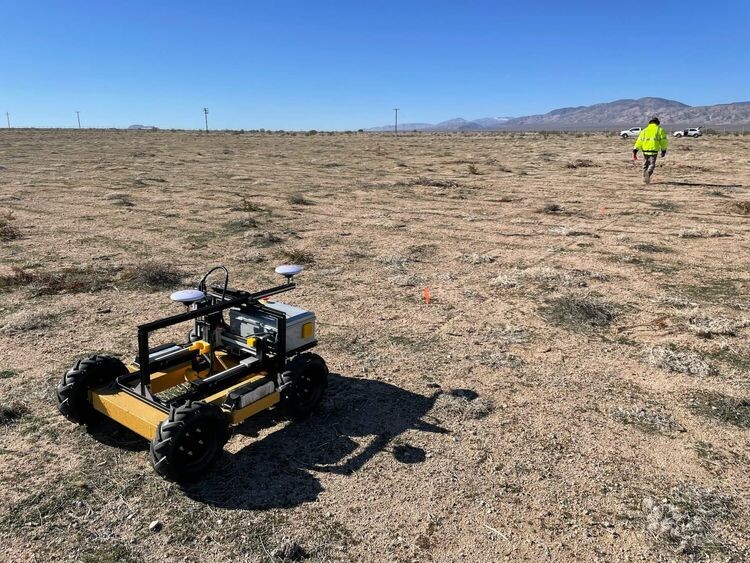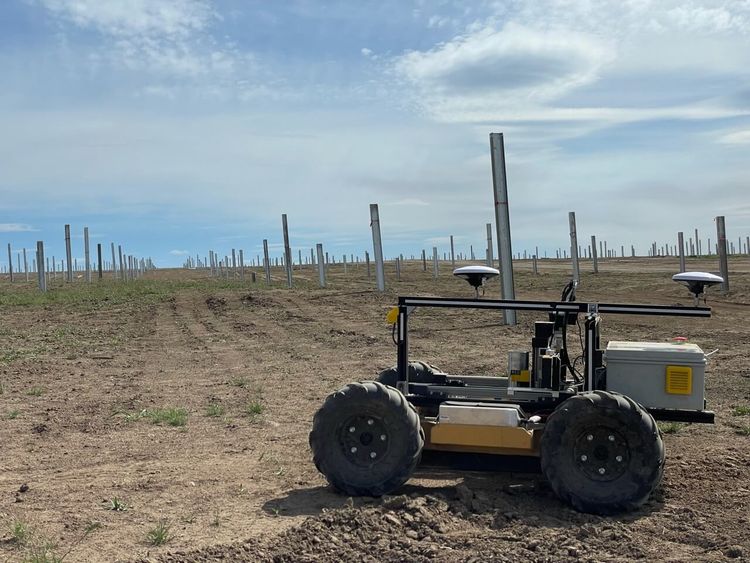The construction industry is still a very lucrative one, with urbanization speeding up in nearly every corner of the world, but it’s also a space with plenty of challenges. One of the biggest they are facing at the moment is a shortage of workers, something that was a throughline in nearly all of the predictions provided to Geo Week News for the construction industry in 2023 by Procore executives. Among the most significant ways companies are fighting these shortages are with automated systems, including both hardware and software solutions, looking to free up time for humans to complete more important, and often more complex, tasks. Civ Robotics is one of the companies paving the way for this transition, with their ground rovers creating an automated system for surveying on construction sites.
The concept for Civ Robotics was actually started with a drone, CEO and co-founder Tom Yeshurun told Geo Week News in a conversation about what the company is adding to surveying on construction sites. Yeshurun had previously worked as a civil engineer on construction sites, getting a first-hand look at how inefficient it could be at times relying on crews of workers to do layout surveys. Noticing that automated mapping existed, the idea for automated layout was derived, with the first ground rovers from the company coming out in 2020.
While the ability to make up for a lack of workers on a jobsite is a big selling point for the Civ Robotics technology – the CivDot and the CivDot+ – Yeshurun notes that different customers have different motivations for turning to automation, with speed and accuracy being the big selling points beyond the lack of human labor.
It’s also designed to be incredibly simple to use, not requiring extensive knowledge of surveying or robotics to operate the machine. Instead, to set the automated rover in action the user just inputs a CSV of lists of coordinates, and then once you choose the first point and the direction to go, the CivDot takes it from there. Yeshurun notes that any high school grad, or anyone in their late 50s who has a phone, can easily operate the machine. The CivDot systems also creates an automated report with ground elevation measurements at the end of a mission, and includes a customizable speaker to inform human workers of point description or cut and fill based on the ground elevation measurement and the desired elevation from the CSV.

It’s worth diving in a bit more specifically, too, about those three main pillars which the Civ Robotics machines work to fight in terms of labor, speed, and accuracy. For the former, it’s fairly simple in that rather than needing crews of at least three or four working all day to complete a layout for one section of a work site, only one person is needed to work with the CivDot to monitor the progress, swap out paint cans, or perform any other manual tasks that might be needed in addition to the coordinate layouts. And that work is being done much more quickly. Yeshurun gives an example of a project that may require two crews who can each lay out 300 points a day, but with the CivDot upwards of 800 can be completed with significantly less labor. Different projects will, of course, place different values on that speed versus labor equation.
Finally, the accuracy is another major portion of this entire conversation. There are inherent limits to how accurate a human can be when laying out points at a site, and it’s just not the same as an automated system like these uncrewed ground vehicles (UGVs). Simply put, a human arm isn’t as steady as a robotic one, and these rovers are able to conceptualize things down to fractions of an inch in a way humans simply can’t. And Civ Robotics offers two different machines for rent in their Robot as a Service (RaaS) program, the CivDot and CivDot+. The former can complete more work in a day, while the latter incorporates a robotic arm to produce more accurate points. Yeshurun also notes that the company is incorporating laser pointers rather than paint cans in their machines, pinpointing more precise points while also eliminating the risk of wind playing a role in layout.
Right now, the biggest use case for this technology has been on solar farms, which Yeshurun points out wasn’t even on the company’s radar when it was first being developed. It makes sense as a perfect place to use these UGVs, however, as they are built in large, open spaces and need thousands of points to be laid out. That would take a significant amount of human labor, but can be done more quickly and efficienctly with these automated systems. Yeshurun also points to LNG plants, ground improvements - including wick drain construction - foundation work, and road construction as other common use cases for the rovers.
We’re in a time when construction firms need to be creative amid worker shortages – Yeshurun cites one estimate that indicates for every five workers retiring from the industry, only two are entering the workforce. Even with declining worker numbers, the demand for projects is only going to grow. That goes doubly for a space like solar farms as renewable energy demand will grow exponentially in coming years. A lot of tools are being, and will continue to be, developed to solve for specific functions on a worksite amid these shortages, and Civ Robotics is standing out as one for projects requiring layout work.






